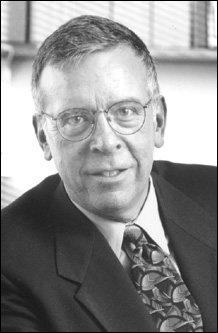![]()
Departments
![]()

|
28 August 1998 |
Vol. II, No. 4 |
Feature Article
Freshman class profile
Class of 2002 is second biggest ever
By Eric McHenry
BU isn't saying yes to any more students than usual, but more students than usual are saying yes to BU. The class of 2002 will be the second largest in the University's history, primarily because of an unanticipated increase in the number of applicants accepting their offers of admission.
"In the admissions world that's known as yield, and our yield has gone up 1.3 percent," says Thomas Rajala, director of admissions. "I think the message it sends is that more and more people are interested in coming here to find out what all the excitement is about."
|
|
|
Thomas Rajala |
"We hadn't planned on a class of that size in 1995 either," says Rajala. "But the same two phenomena occurred: higher yield, fewer lost deposits. This year we planned on a freshman class of 3,850 students and admitted the number that would have yielded 3,850 if we had not seen that increase in yield and that decline in summer melt."
Because the factors that account for its size are unrelated to admissions standards, the class of 2002 has credentials just as strong as those of 2001, Rajala says.
"We're almost identical to last year's profile," he says. "We have 300 more students in the class and we've held onto an SAT composite average of 1262, students in the top 12 percent of their class, and on average a 3.43 grade point average. That's impressive, I think."
A disparity between the percentages of enrolling females and males continues to emerge, Rajala notes.
"For reasons we haven't figured out yet, we are apparently appealing to more women than to men, and that's going to be evident again in this year's class," which, he says, "will probably be less than 40 percent male."
"We've always been a little out of balance on the gender front, in part because there are simply more women than men who take the SAT and identify themselves as college-bound. But the differential isn't that big: it's more like 45 percent men, 55 percent women taking the SAT."
This year will see a drop in the number of freshmen from Asian countries. Director of International Admissions Paul Greene says he has seen some evidence that the decline is attributable to weakened Asian currencies, but it has all been anecdotal.
"Over the past three years or so," Greene says, "we've been strengthening enrollment from other areas, such as Latin America, South America, and Canada." Gains in representation from those regions, he says, are
